 !)
!) :
it is the usual picture of software tools, nothing special any more!
:
it is the usual picture of software tools, nothing special any more!
http://www.sparql.org/sparql?query=…
SELECT ?translator ?translationTitle ?originalTitle ?originalDate
FROM <http://…/TR_and_Translations.rdf>
WHERE {
?trans rdf:type trans:Translation;
trans:translationFrom ?orig;
trans:translator [ contact:fullName ?translator ];
dc:language "fr";
dc:title ?translationTitle.
?orig rdf:type rec:REC;
dc:date ?originalDate;
dc:title ?originalTitle.
}
ORDER BY ?translator ?originalDate


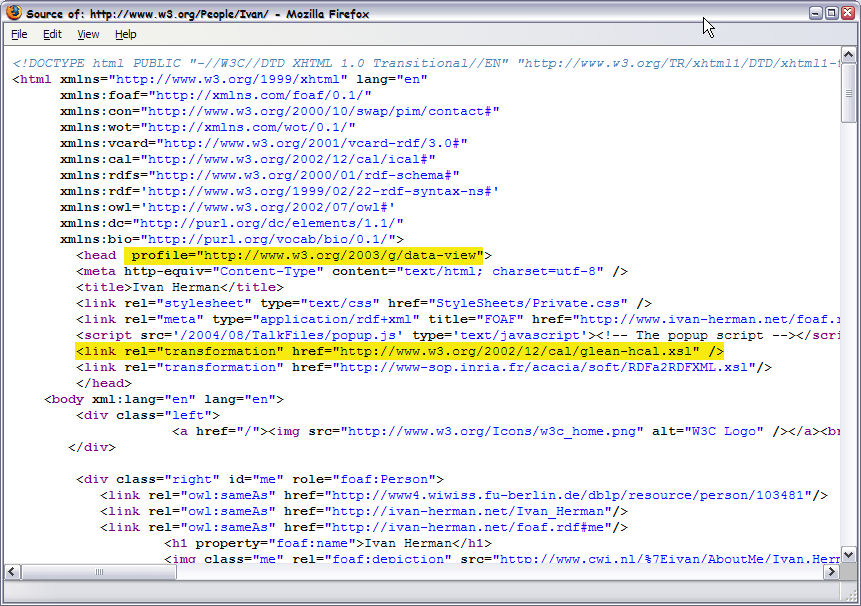
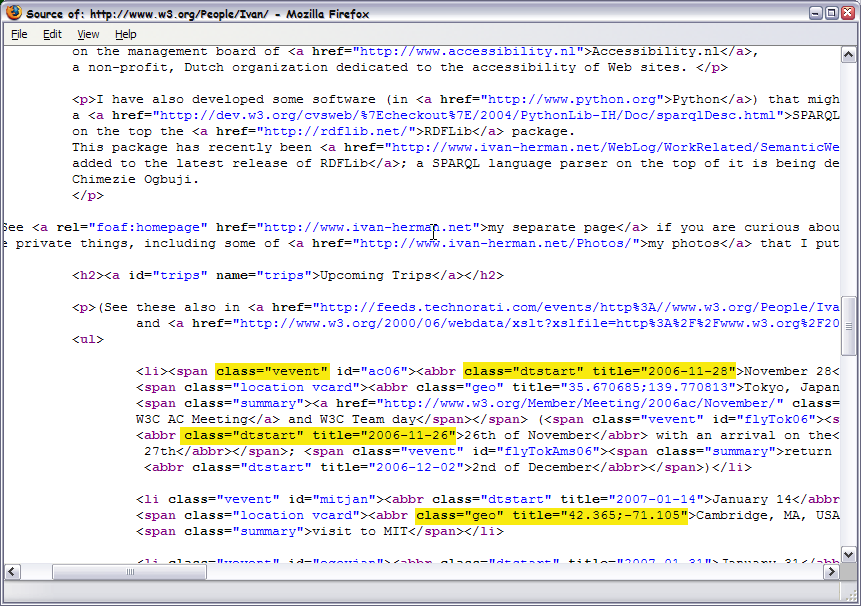
<rdf:RDF xmlns:rdf="http://www.w3.org/1999/02/22-rdf-syntax-ns#"
xmlns:dataview="http://www.w3.org/2003/g/data-view#"
xml:base="http://www.w3.org/People/Ivan/">
<c:Vcalendar xmlns:r="http://www.w3.org/1999/02/22-rdf-syntax-ns#"
xmlns:c="http://www.w3.org/2002/12/cal/icaltzd#"
xmlns:h="http://www.w3.org/1999/xhtml">
<c:prodid>-//connolly.w3.org//palmagent 0.6 (BETA)//EN</c:prodid>
<c:version>2.0</c:version>
<c:component>
<c:Vevent r:about="#ac06">
<summary xmlns="http://www.w3.org/2002/12/cal/icaltzd#" xml:lang="en">W3C@10,
W3C AC Meeting and W3C Team day</summary>
<dtstart xmlns="http://www.w3.org/2002/12/cal/icaltzd#"
r:datatype="http://www.w3.org/2001/XMLSchema#date">2006-11-28</dtstart>
<dtend xmlns="http://www.w3.org/2002/12/cal/icaltzd#"
r:datatype="http://www.w3.org/2001/XMLSchema#date">2006-12-03</dtend>
<url xmlns="http://www.w3.org/2002/12/cal/icaltzd#"
r:resource="http://www.w3.org/Member/Meeting/2006ac/November/"/>
<location xmlns="http://www.w3.org/2002/12/cal/icaltzd#" xml:lang="en">Tokyo, Japan</location>
<geo xmlns="http://www.w3.org/2002/12/cal/icaltzd#" r:parseType="Resource">
<r:first r:datatype="http://www.w3.org/2001/XMLSchema#double">35.670685</r:first>
<r:rest r:parseType="Resource">
<r:first r:datatype="http://www.w3.org/2001/XMLSchema#double">139.770813</r:first>
<r:rest r:resource="http://www.w3.org/1999/02/22-rdf-syntax-ns#nil"/>
</r:rest>
</geo>
</c:Vevent>
</c:component>
…
(see the full file if interested…)
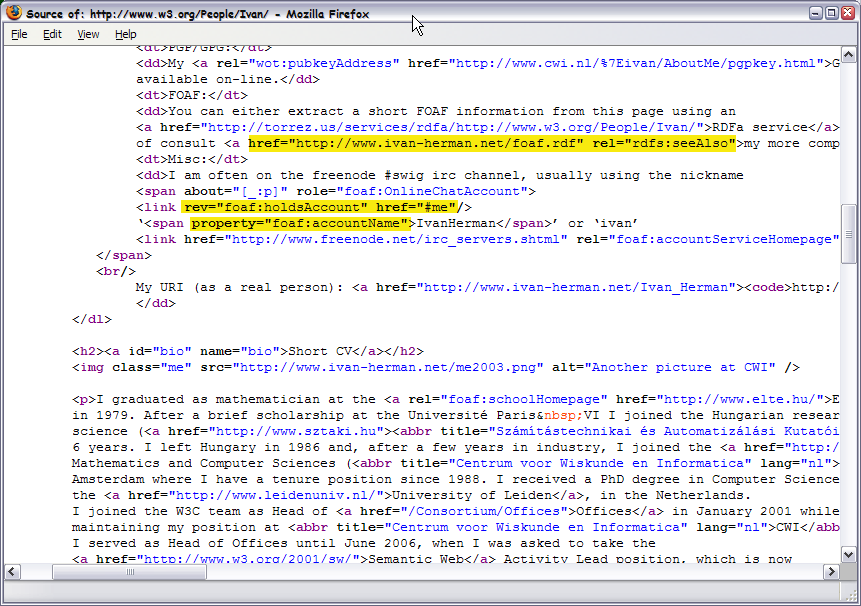
<rdf:RDF xmlns:foaf="http://xmlns.com/foaf/0.1/"
xmlns:rdfs="http://www.w3.org/2000/01/rdf-schema#"
xmlns:rdf="http://www.w3.org/1999/02/22-rdf-syntax-ns#" >
<foaf:Person rdf:about="http://www.w3.org/People/Ivan/#me">
<foaf:mbox rdf:resource="mailto:ivan@w3.org"/>
<foaf:workInfoHomepage rdf:resource="http://www.w3.org/Consortium/Offices"/>
<foaf:workInfoHomepage rdf:resource="http://www.iw3c2.org"/>
<foaf:workInfoHomepage rdf:resource="http://www.w3.org/2001/sw"/>
<foaf:name>Ivan Herman</foaf:name>
<foaf:workplaceHomepage rdf:resource="http://www.w3.org"/>
<foaf:schoolHomepage rdf:resource="http://www.elte.hu/"/>
…
(see the full file if interested…)
http://www.sparql.org/sparql?query=…
SELECT DISTINCT ?name ?home ?orgRole ?orgName ?orgHome # Get RDFa from my home page: FROM <http://www.w3.org/People/Ivan/> # GRDDL-ing http://www.w3.org/Member/Mail: FROM <http://www.w3.org/Member/Mail/> WHERE { ?foafPerson foaf:mbox ?mail; foaf:homepage ?home. ?individual contact:mailbox ?mail; contact:fullName ?name. ?orgUnit ?orgRole ?individual; org:name ?orgName; contact:homePage ?orgHome. }
Possible variants: F-logic, production rules, fuzzy logic systems, …; none of these have been finalized yet

These are just ideas floating around…
(Need a new PhD topic?  )
)
 . See these statements:
. See these statements:
 !
! ; it is unnecessary and counterproductive
; it is unnecessary and counterproductive| Library metadata | Defense | Life sciences | |
|---|---|---|---|
| Problem to solve? | single-domain integration | yes, serious data integration needs | yes, connections among genetics, proteomics, clinical trials, regulatory,… |
| Willingness to adopt? | yes: OCLC push and Dublin Core Initiative(*) | yes: funded early DAML (OWL) work | yes: intellectual level high, much modeling done already. |
| Motivation | light | strong | very strong |
| Links to | other library data | phone calls records, etc | chemistry, regulatory, medical, etc |
(*) note that the Dublin Core Initiative’s work go way beyond digital libraries these days
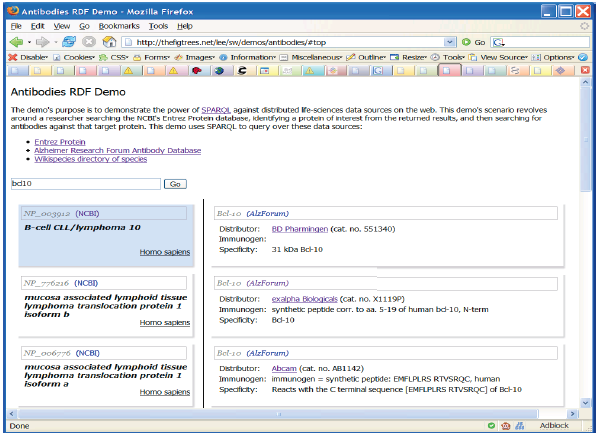
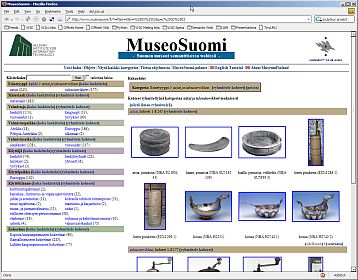
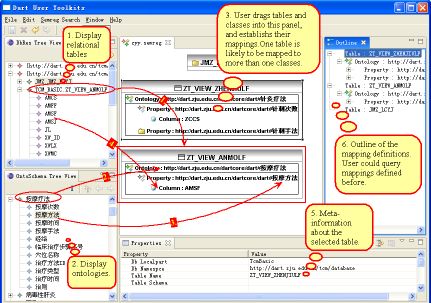
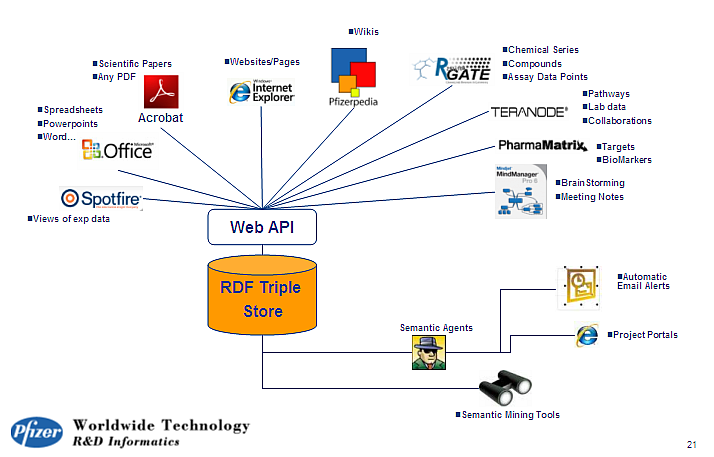

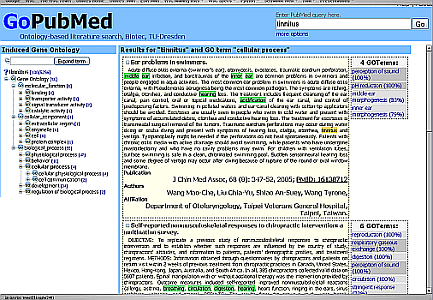
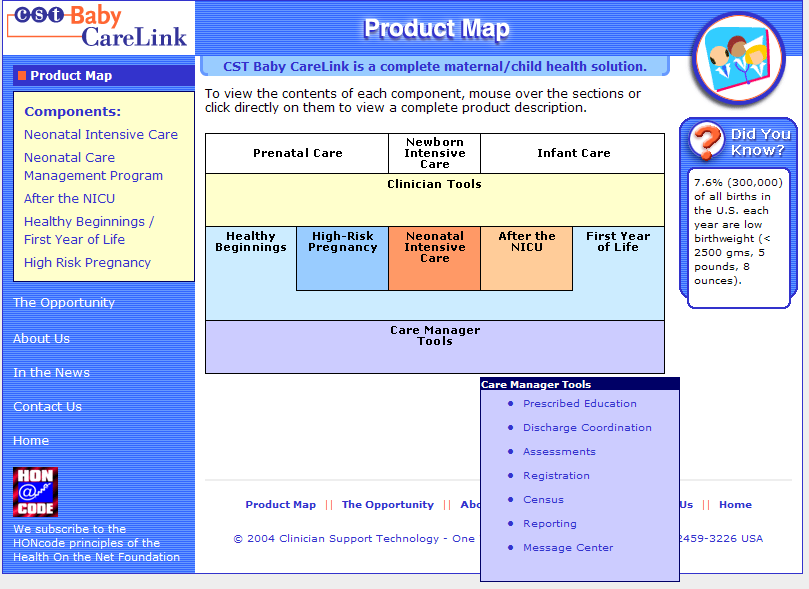
These slides are publicly available on:
http://www.w3.org/2007/Talks/0403-Tampere-IH/
in XHTML and PDF formats; the XHTML version has active links that you can follow